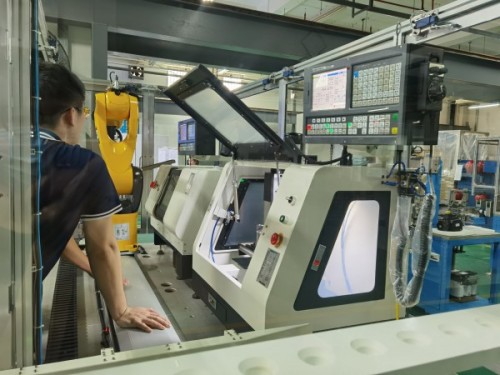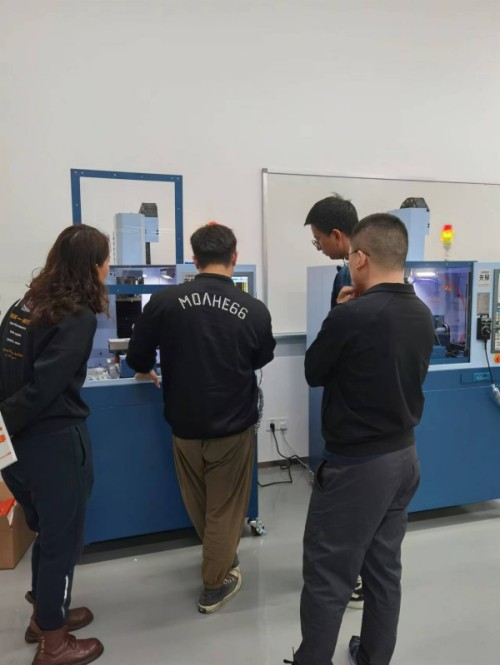Blog
Xendoll has 22 years of experience in the production of small machine tools. We will help you choose the suitable machine and share our experience in CNC machining with you.
 Sep 22, 2024
Sep 22, 2024
 Xendoll
Xendoll
 1107
1107
CNC (Computer Numerical Control) machining has become an essential part of modern manufacturing, offering high precision and efficiency. However, even with advanced CNC machines, optimizing performance and improving results can be a continual challenge. Whether you are a beginner or an experienced machinist, understanding key strategies can
1. Select the Right Tools and Materials
One of the fundamental aspects of improving CNC machining is selecting the appropriate cutting tools and materials for your project. Using the correct tool type, size, and material will significantly impact both the quality of the final product and the efficiency of the machining process. For example, high-speed steel (HSS) tools are suitable for softer materials like aluminum, while carbide tools are more
Additionally, consider the workpiece material. Using materials that are well-suited for CNC machining, such as aluminum, brass, and some plastics, can reduce wear on the machine and tools while ensuring

2. Optimize Toolpath Strategies
A well-optimized toolpath is crucial for reducing machining time, improving surface finish, and extending tool life. Toolpaths determine the movement of the cutting tool relative to the workpiece, and optimizing them can enhance overall performance. Some best practices
Minimize unnecessary movements: Efficie
Choose the right cutting direction:
Use high-efficiency machining (HEM): HEM
3. Pay Attention to Speeds and Feeds
Selecting the right spindle speeds (RPM) and feed rates (how fast the tool moves through the material) is critical for CNC machining performance. Optimal speeds and feeds depend on the material, tool type, and desired finish quality. If speeds are too high, tools can overheat and wear out quickly. Conversely, too slow speeds may result in roug
A common practice is to refer to manufacturers’ recommended cutting parameters or use specialized software to determine the best speeds and feeds for your project. Experimenting with small adjustments to these settings can also help you find the optimal combination
4. Maintain Machine Calibration and Maintenance
A well-maintained CNC machine ensures consistent performance over time. Regular calibration checks on machine axes, tool offsets, and workpiece setups are necessary to maintain precision. Machine misalignments can lead to inaccuracies in your final product, no matter how skilled the
Regular maintenance, such as cleaning out chips, checking lubrication levels, and inspecting tool conditions, helps prevent breakdowns and reduces wear on machine components. Keeping a maintenance log can ensure that all required checks are

5. Upgrade Software and Use Simulation Tools
CNC machining is heavily reliant on computer software to generate accurate toolpaths and ensure smooth operations. Using the latest CAD/CAM (Computer-Aided Design and Manufacturing) software can improve efficiency and functionality, often providing new features that help opti
Additionally, simulation tools allow you to test and visualize the machining process before running it on the actual machine. By simulating toolpaths, you can identify potential collisions, avoid errors, and adjust strategies for better efficiency without wasting materials or risking damage to your machine.
6. Focus on Fixture Design and Workholding
Proper workholding and fixturing are critical to CNC machining accuracy and repeatability. A secure workpiece prevents vibration and movement during the machining process, resulting in better surface finishes and more precise cuts. Inadequate workholding may lead to inconsistencies, tool breakage, and costly errors
Custom fixtures designed for specific parts can also improve the efficiency of your machining process. Modular fixturing systems allow for quick setups
7. Invest in Training and Continuous Improvement
Even with the most advanced machines, the skill of the operator is crucial to CNC machining success. Investing in proper training for your team, whether it's learning the latest CAM software, understanding new machining techniques, or mastering advanced toolpath strategies, can elevate the
Furthermore, adopting a mindset of continuous improvement is essential.
Conclusion
Improving your CNC machining process is a multifaceted endeavor that involves selecting the right tools and materials, optimizing toolpaths, and ensuring that both machine and operator are up to par. By focusing on key areas such as speeds and feeds, regular maintenance, software upgrades, and effective workholding, you can achieve higher precision, faster production times



 Show all our samples
Show all our samples
 Provide you with a free quote
Provide you with a free quote
 Answer all the questions you may have
Answer all the questions you may have
 Guided installation and other options
Guided installation and other options